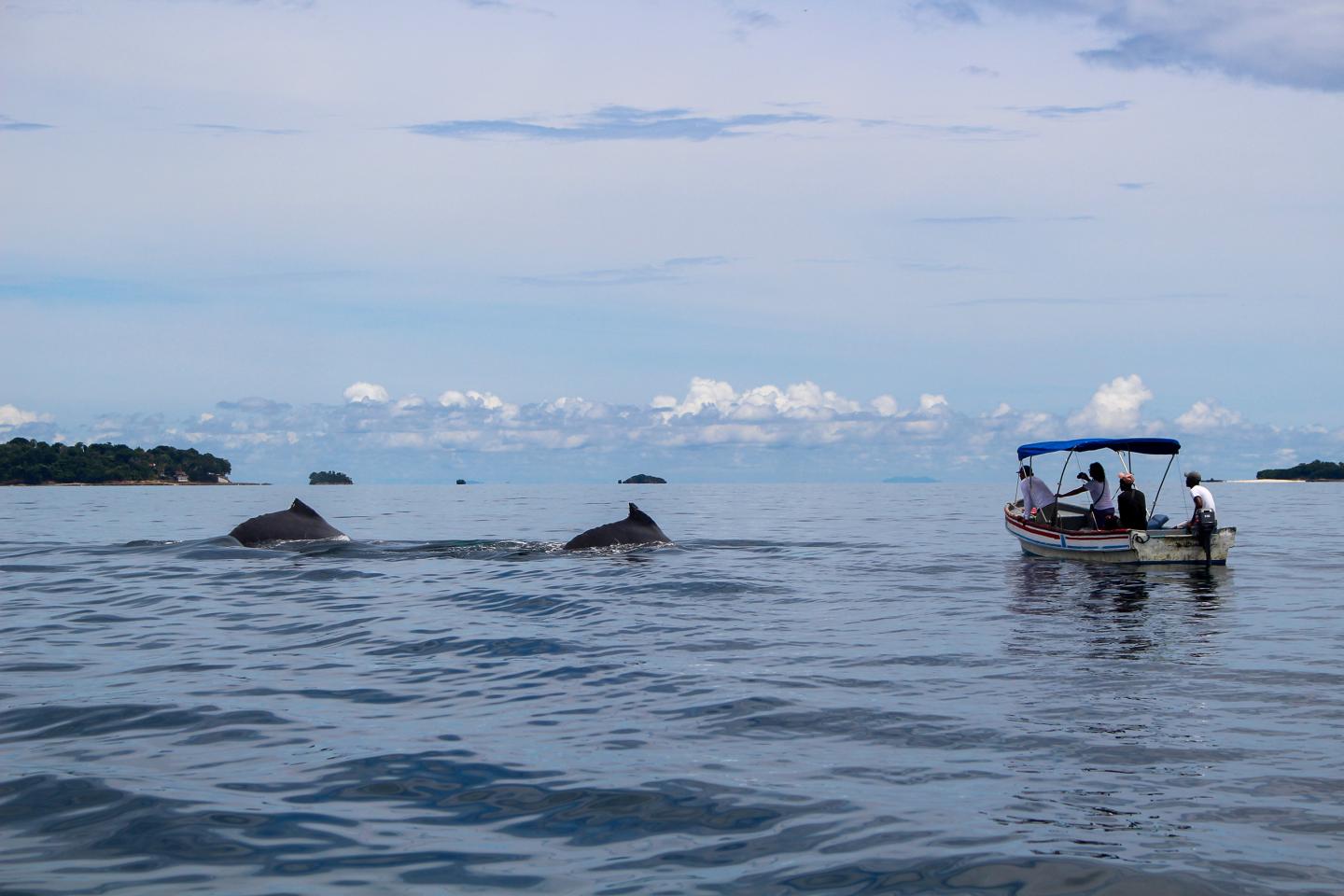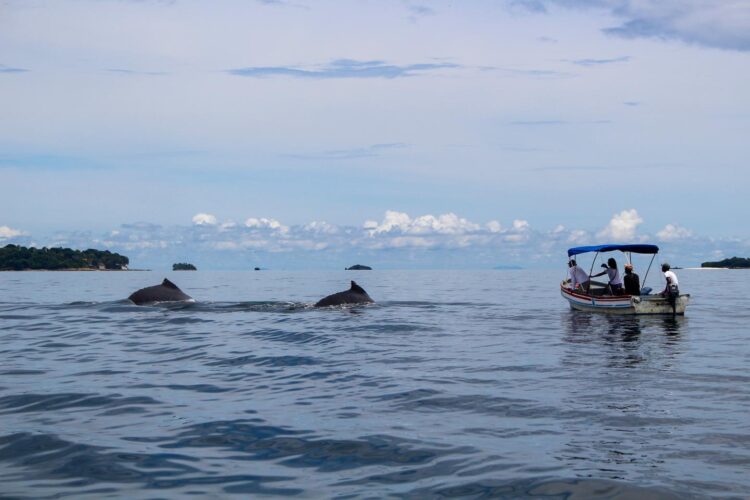
Credit: Héctor Guzmán
According to the International Whaling Commission, whale-watching tourism generates more than $2.5 billion a year. After the COVID-19 pandemic, this relatively safe outdoor activity is expected to rebound. Two new studies funded by a collaborative initiative between the Smithsonian Tropical Research Institute (STRI) in Panama and Arizona State University (ASU) show how science can contribute to whale watching practices that ensure the conservation and safety of whales and dolphins.
“The Smithsonian’s role is to provide scientific advice to policy makers as they pioneer management strategies to promote whale conservation,” said STRI marine biologist, Hector Guzmán, whose previous work led the International Maritime Organization to establish shipping corridors in the Pacific to prevent container ships from colliding with whales along their migration routes. “Now we have methods to measure how whale behavior changes as a result of whale-watching practices. These two papers were published in a special volume of Frontiers in Marine Science dedicated to studies of whale-watching practices worldwide.”
Whale watching is on the rise around the world and is part of sustainable tourism-development projects in countries such as Cambodia, Laos, Nicaragua and Panama. But critics say that jobs and increased income for tour operators and coastal residents cannot be justified if whales are harmed.
Whale-watching regulations in Panama first established with Guzman’s help in 2005, and modified in 2017 and 2020, prohibit activities that cause whales to change their behavior. The aim of the first study was to discover if the presence of tourism boats caused the whales to change their behavior during the breeding season.
Researchers monitored humpback whales (Megaptera novaeangliae) during their August-September breeding season within Panama’s Las Perlas Archipelago protected area. From a high vantage point on Contadora Island and from whale-watching vessels, they recorded the number of tourist boats and whales present and activity, including changes in direction, breaching, slapping the water, dives and spy-hops (raising the head above the water surface) on 47 occasions.
They discovered that whale-watching vessels frequently disregarded legal guidelines designed to protect the whales: deliberately chasing whales, getting too close to adult whales and calves, and forcing whales to change their behavior. Other notable observations included:
- Tourist boats chased groups that included calves more often than groups of adults.
- Groups that included a calf changed direction more often than did other group types.
- Whales changed direction more often when more than two to three tourist boats were present.
Roughly 1,000 whale watchers visit the Las Perlas islands each year, and that number is growing. In the second study, researchers interviewed tourists waiting to return to the mainland at the Contadora airport to better understand the whale watching experience. They interviewed every third person waiting in line.
Ninety-nine percent of the tourists who saw whales reported seeing at least one behavior while whale watching, and 68% reported that their experience met or exceeded their expectations. 30% said that they did not observe a whale. Half reported that they had observed either their boat or other nearby boats chasing whales at high speed, or that they had gotten closer to the whales than the distance permitted by law.
Breeding whales are threatened by marine pollution, ship strikes, climate change, noise and disturbances while they are resting, socializing and feeding. In the future, researchers hope to measure the amount of cortisol (a stress hormone) in whale fecal samples to find out if the animals are under stress, use better technology (e.g., theodolites–instruments that measure angles) to measure the distance between boats and whales, use drones with cameras to document interactions and continue to survey tourists to better understand whale watching and inform management strategies to keep these magnificent animals safe.
“I wanted to do a study with practical outcomes for conservation, not just another paper that sits on a shelf,” said Katie Surrey, doctoral candidate at ASU and co-author of both papers. “In Las Perlas, where whales come to breed, we observed harassing behavior, like ten tourist boats surrounding a single mother and calf. But we also talked to tourists and operators who learned a significant amount about whales and champion better whale-watching practices and conservation efforts as a result. For my dissertation I plan to find out more about what motivates both the tourists and the operators, so that we can suggest ways to both improve their experience and safeguard the whales.”
###
Media Contact
Elisabeth king
[email protected]
Original Source
https:/
Related Journal Article
http://dx.





